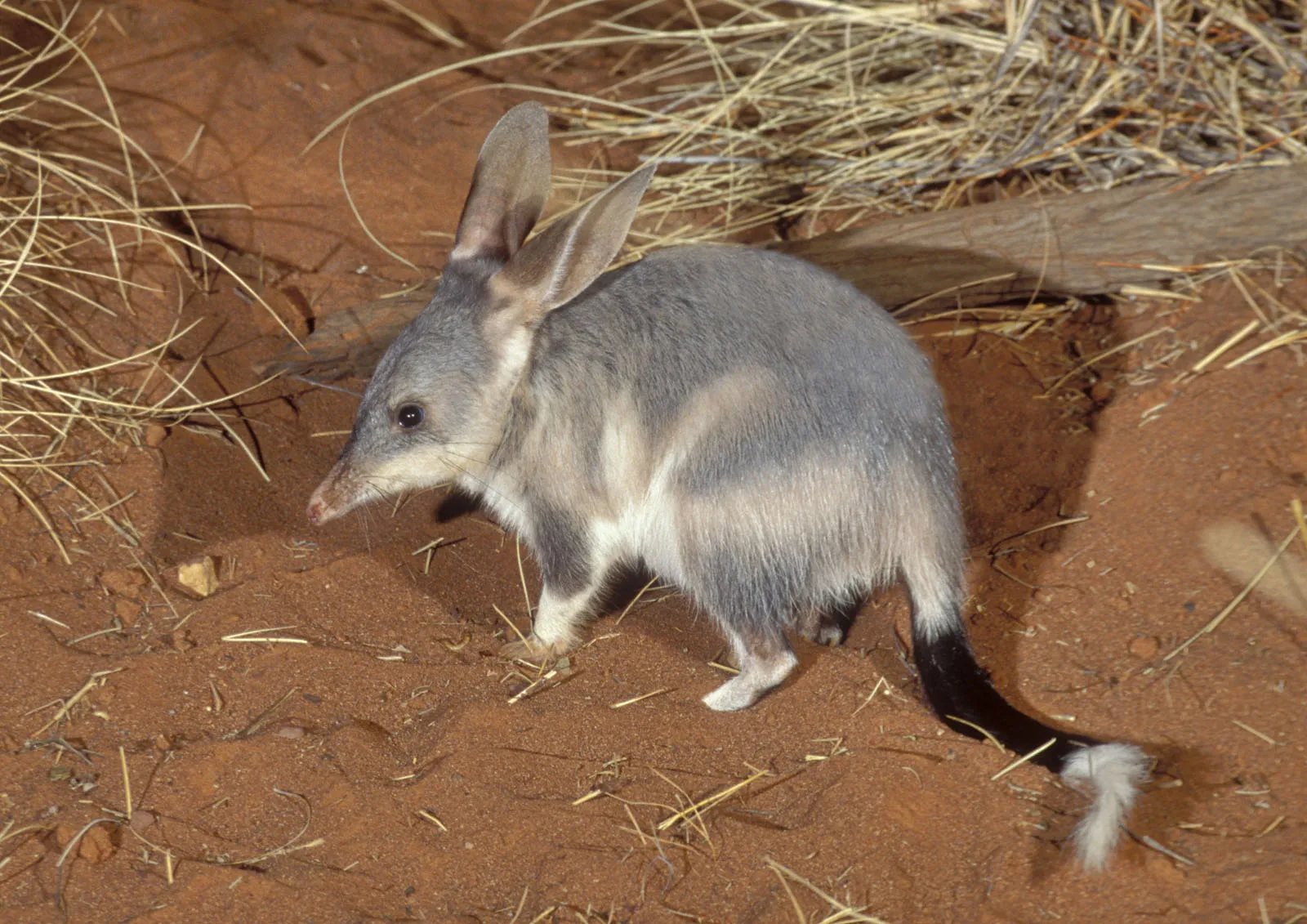
The bilby, also known as the rabbit-eared bandicoot, is a small marsupial native to Australia. With its distinctive long ears and silky fur, the bilby has captured the hearts of many animal lovers around the world. Despite its adorable appearance, the bilby is a highly unique and fascinating creature with a range of interesting traits and behaviors. In this article, we will delve into 15 intriguing facts about the bilby, shedding light on its habitat, diet, reproduction, and conservation status. From its incredible digging abilities to its nocturnal lifestyle, the bilby is truly a remarkable animal worth exploring. So, let’s dive into the world of the bilby and discover some surprising facts about this charismatic marsupial.
Key Takeaways:
- The Bilby, a unique Australian marsupial, is an excellent burrower, seed disperser, and symbol of Easter. Conservation efforts are crucial to protect this endangered species and its cultural significance.
- Bilbies are fascinating creatures with long ears, silky fur, and a crucial role in Indigenous Australian culture. Their endangered status calls for urgent conservation efforts to ensure their survival for future generations.
Bilbies are native to Australia.
The Bilby, scientifically known as Macrotis lagotis, is a small marsupial that is endemic to Australia. They are mainly found in arid and semi-arid regions.
Bilbies are excellent burrowers.
These creatures have strong forelimbs and long claws, which allow them to dig impressive burrows. These burrows can be over 3 meters long and up to 2 meters deep, providing shelter from predators and extreme temperatures.
Bilbies are nocturnal.
Bilbies are primarily active during the night, using their well-developed sense of smell and hearing to navigate and find food in the darkness.
Bilbies have a unique diet.
These omnivorous marsupials have a diverse diet consisting of insects, seeds, bulbs, fungi, and even small vertebrates. However, their favorite food is definitely the seeds of the spinifex grass.
Bilbies are excellent seed dispersers.
As they forage for food, Bilbies play a crucial role in the ecosystem by spreading the seeds of the plants they consume, aiding in plant reproduction and regeneration.
Bilbies are known for their long ears.
One of the most distinctive features of Bilbies is their long and slender ears, which can measure up to 12 centimeters in length. These ears not only enhance their hearing ability but also help in thermoregulation.
Bilbies are excellent jumpers.
Despite their small size, Bilbies are powerful jumpers. They can jump up to one meter high, allowing them to escape predators or reach food sources.
Bilbies have beautiful silky fur.
The fur of a Bilby is soft, silky, and usually colored a combination of gray, white, and tan. This unique fur helps them blend into their natural environment.
Bilbies have a complex social structure.
These marsupials generally live in small family groups, with each group occupying a separate burrow system. They have a hierarchical structure where dominant individuals maintain territories.
Bilbies are endangered.
Due to habitat loss, predation by introduced species like feral cats and foxes, and competition with livestock, the population of Bilbies has dramatically declined in recent years. Conservation efforts are underway to protect and reintroduce these amazing creatures back into the wild.
Bilbies have been a symbol of Easter in Australia.
The Bilby has gained recognition as an alternative to the European rabbit as the symbol of Easter in Australia. This highlights the importance of raising awareness and supporting conservation efforts for this unique marsupial.
Bilbies have a gestation period of less than a month.
Female Bilbies have a remarkably short gestation period of just 12 to 14 days, which is one of the shortest among mammals. After giving birth, the tiny undeveloped joeys crawl into the mother’s pouch to continue their development.
Bilbies are agile climbers.
Bilbies have adapted to life in the arid regions by being agile climbers. They can climb small trees or shrubs to forage for food or evade predators.
Bilbies have a keen sense of smell.
With their long snouts, Bilbies possess an exceptional sense of smell that helps them locate food sources hidden beneath the surface of the ground or in the vegetation.
Bilbies have an important role in Indigenous Australian culture.
The Bilby holds significant cultural importance for Indigenous Australians, and is often considered a symbol of the connection between humans and the land. It plays a key role in Dreamtime stories, art, and traditional practices.
With their unique characteristics and critical role in the ecosystem, Bilbies are truly remarkable creatures. It is crucial that we continue our efforts to protect and conserve these endangered marsupials, ensuring their survival for future generations.
Conclusion
In conclusion, the bilby is a fascinating creature native to Australia. With its unique features and impressive adaptations, it has become an important symbol of conservation efforts in the region. From its long ears to its nocturnal habits, the bilby has captured the hearts of many wildlife enthusiasts.The bilby’s role as an important seed disperser makes it a vital component of the ecosystem. Unfortunately, due to habitat loss and predation by introduced species, the bilby population has declined significantly over the years. However, with ongoing conservation efforts and initiatives, there is hope for the bilby’s survival.By raising awareness about this remarkable marsupial and supporting organizations dedicated to its protection, we can help ensure that future generations can continue to admire the unique characteristics and importance of the bilby.
FAQs
1. What is a bilby?
The bilby, also known as the rabbit-eared bandicoot, is a small marsupial native to Australia. It is known for its long ears, pointed snout, and silky fur.
2. What do bilbies eat?
Bilbies are omnivorous, meaning they eat both plants and small animals. Their diet primarily consists of plant roots, bulbs, seeds, insects, and fungi.
3. Are bilbies endangered?
Yes, bilbies are considered to be an endangered species. Their population has declined due to habitat loss, changes in fire regimes, and predation by feral animals.
4. How long do bilbies live?
Bilbies have a relatively short lifespan compared to other marsupials. In the wild, they typically live for around five to seven years.
5. Are bilbies nocturnal?
Yes, bilbies are primarily nocturnal creatures. They are most active during the night, when they forage for food and take shelter in their burrows during the day.
6. Can bilbies be domesticated as pets?
No, bilbies are not suitable to be kept as pets. They are wild animals and require specific habitats and diets to thrive.
7. How can I help conserve bilbies?
You can support bilby conservation efforts by donating to organizations that work towards protecting their habitat, spreading awareness about their plight, and advocating for their conservation at local and national levels.
8. Where can I see bilbies in the wild?
Bilbies can still be found in a few areas of Australia, particularly in sanctuaries and protected reserves. Check with local wildlife organizations and national parks for opportunities to see them in their natural habitat.
Bilbies play a crucial role in maintaining Australia's delicate ecosystem through their burrowing and seed dispersal habits. Their plight highlights the importance of conservation efforts to protect endangered species and preserve biodiversity. By understanding the intricate connections within ecology, we can better appreciate the significance of each species and work towards safeguarding them for future generations. Dive deeper into the fascinating world of bilbies and beyond by exploring more captivating facts about nature's wonders.
Was this page helpful?
Our commitment to delivering trustworthy and engaging content is at the heart of what we do. Each fact on our site is contributed by real users like you, bringing a wealth of diverse insights and information. To ensure the highest standards of accuracy and reliability, our dedicated editors meticulously review each submission. This process guarantees that the facts we share are not only fascinating but also credible. Trust in our commitment to quality and authenticity as you explore and learn with us.


